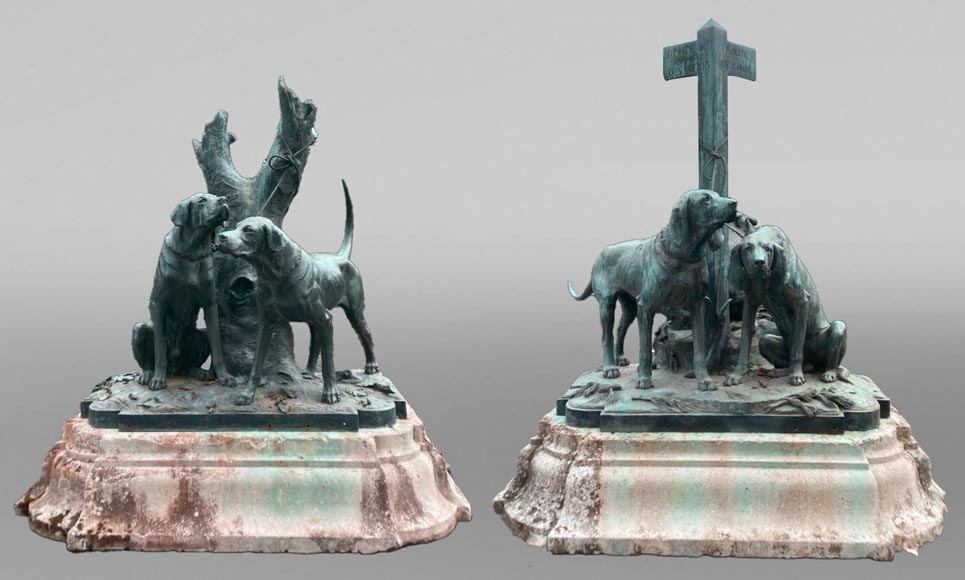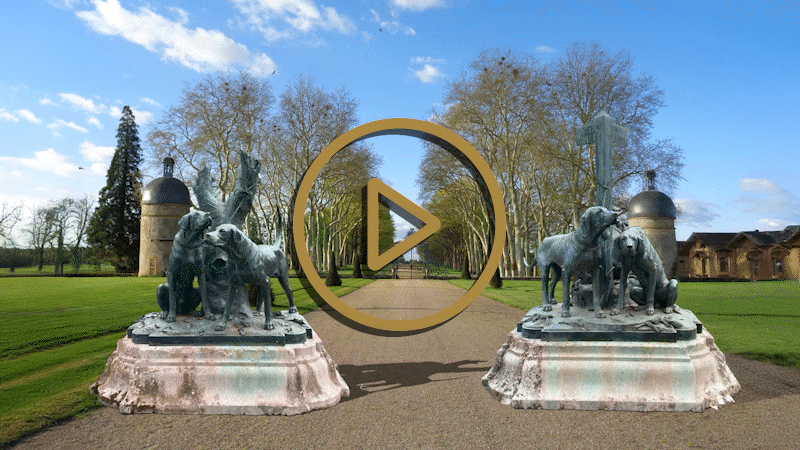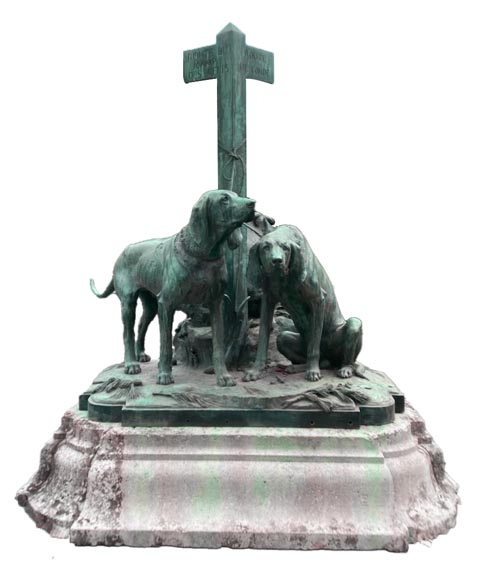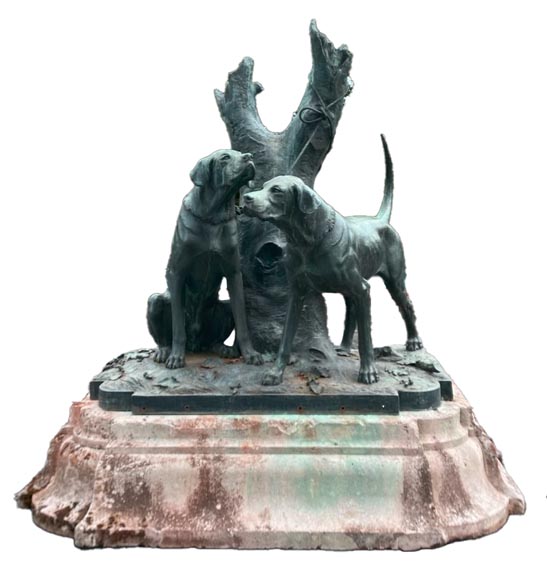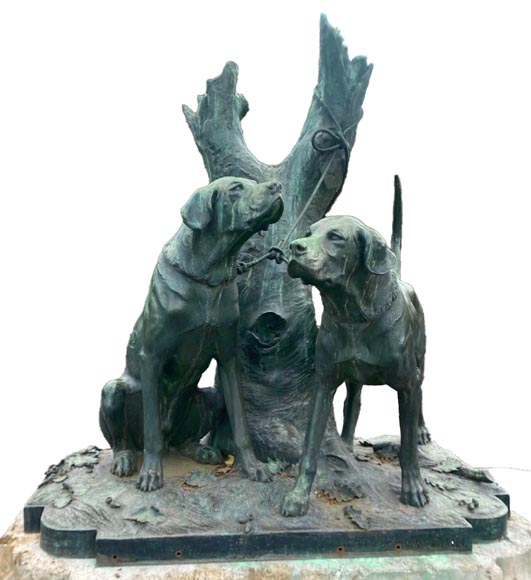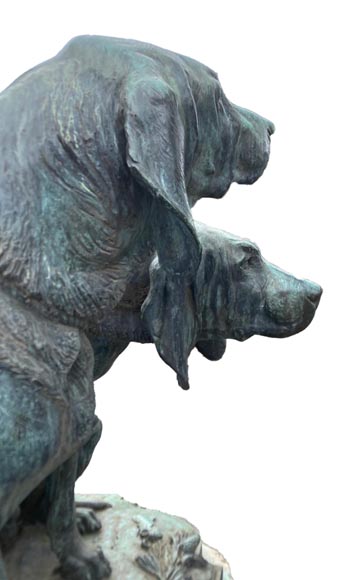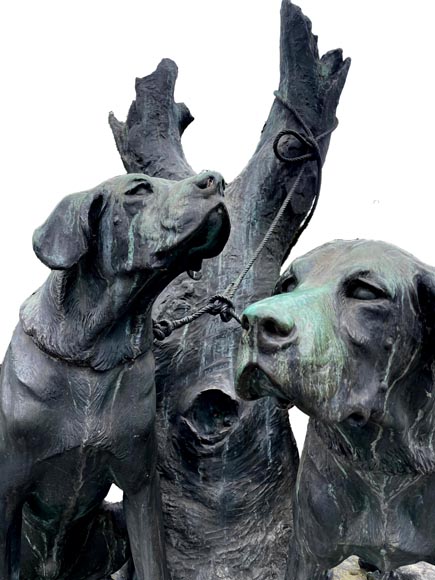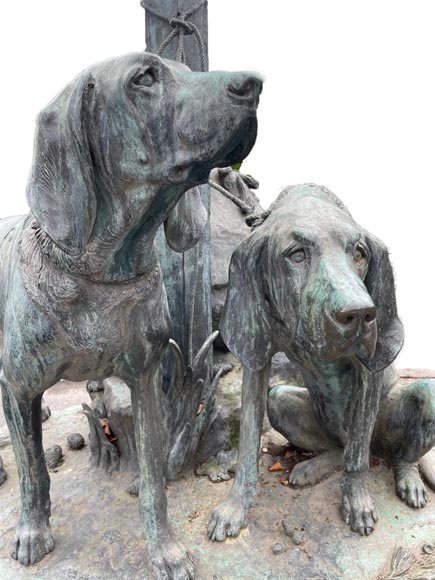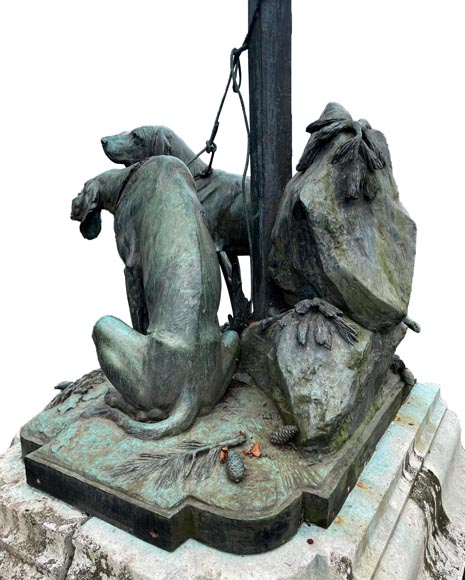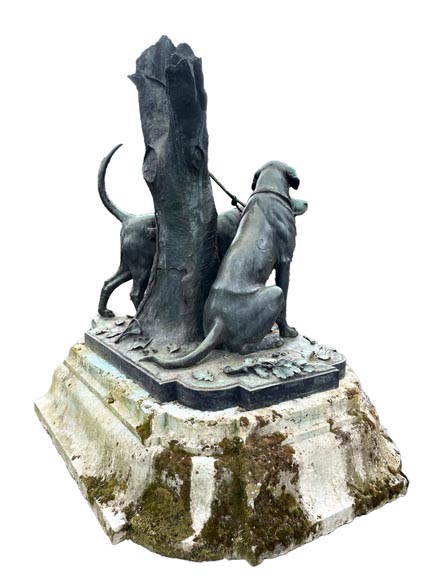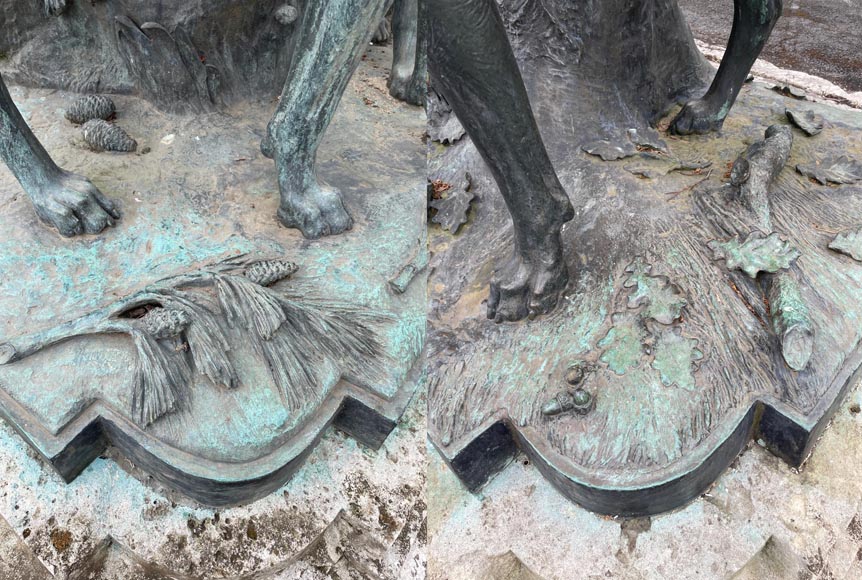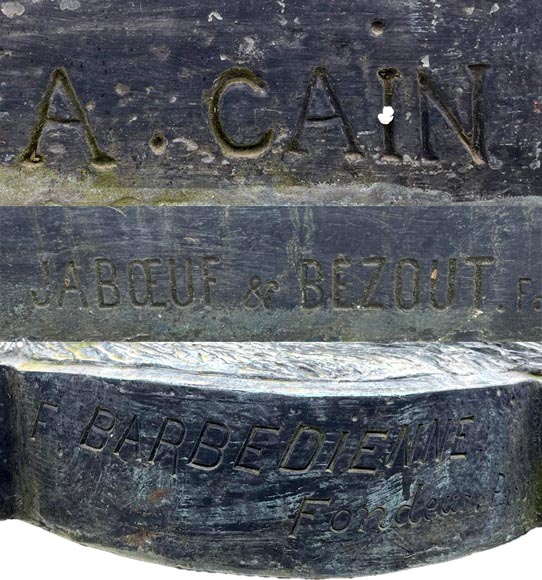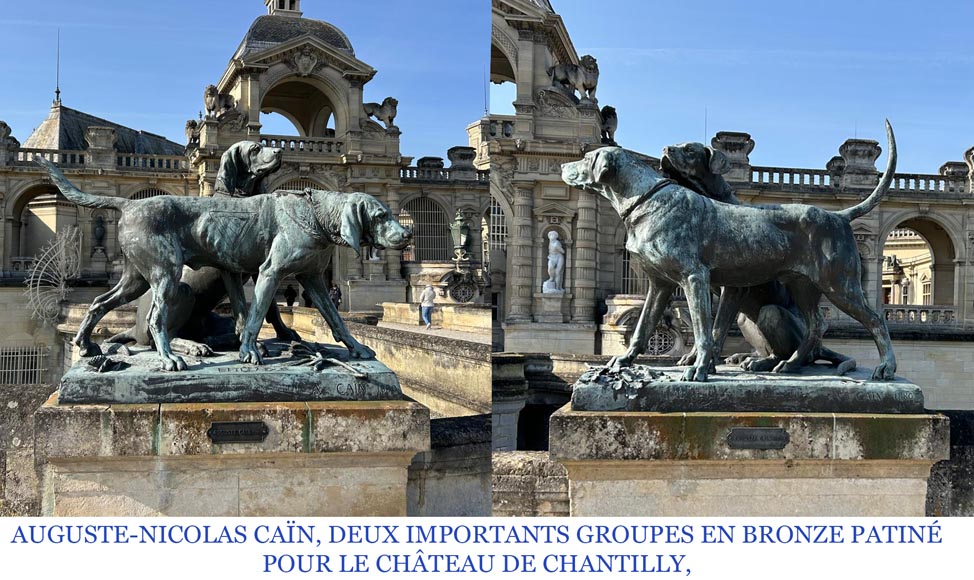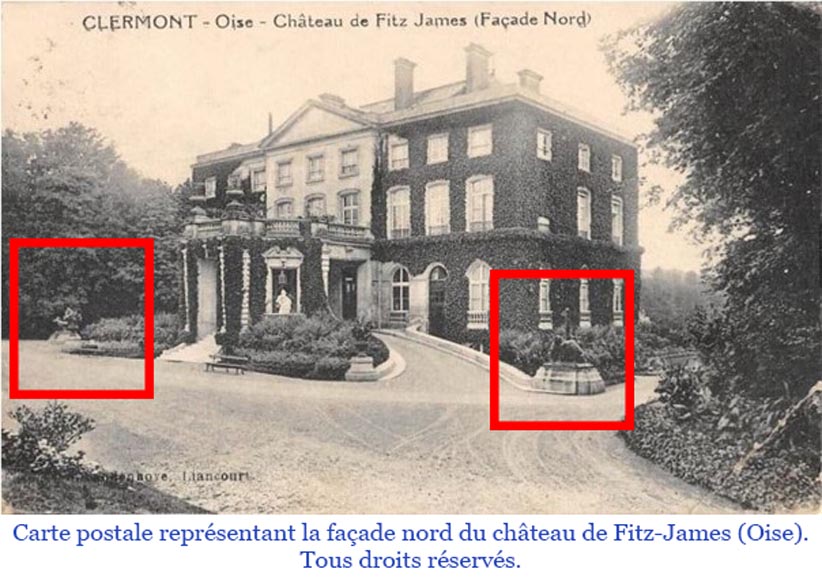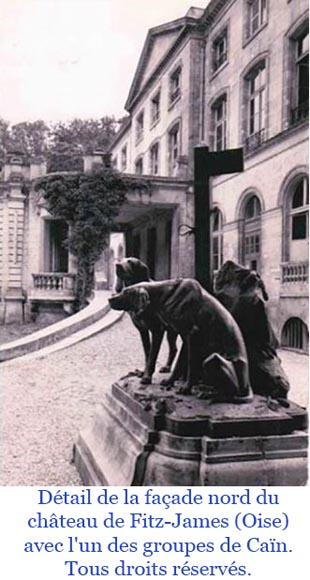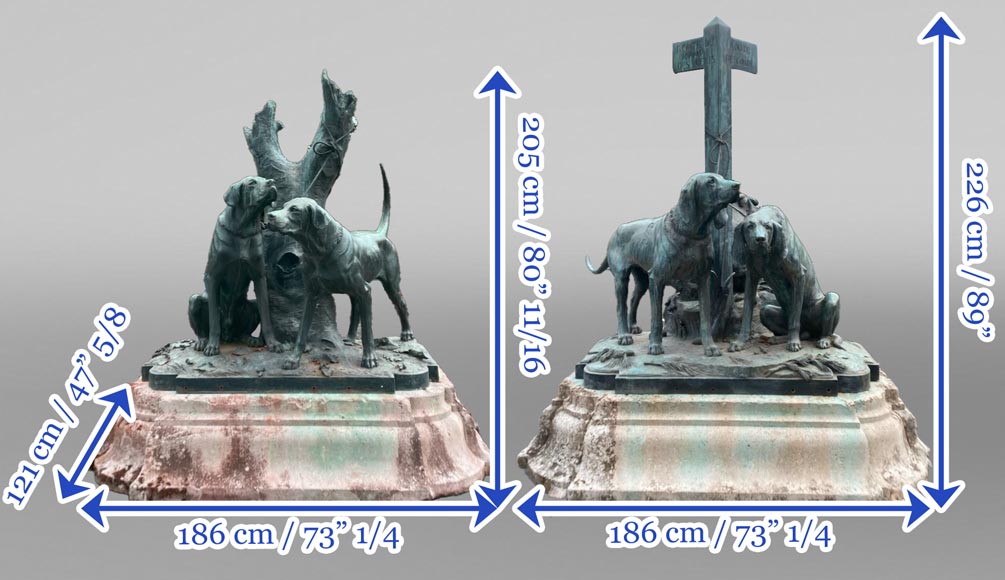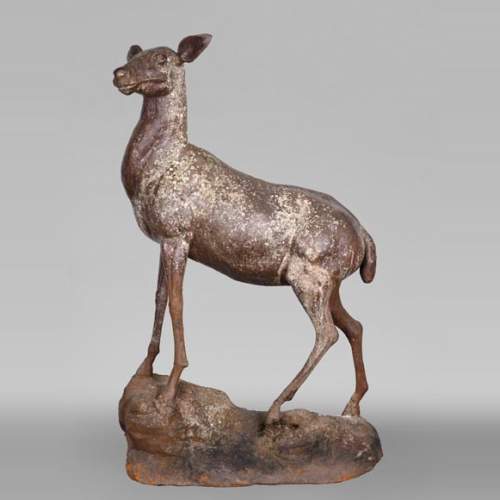Style Other / Ref.15500
Auguste-Nicolas CAÏN, two monumental bronze groups, original stone bases, 1893
Dimensions
Width 73'' ¼ 186cm
Height 89'' 226cm
Depth: 47'' ⅝ 121cm
Origin:
France 19th century
Status:
Very good state
These two groups were commissioned by Jacques Stern (1839-1902) from one of the greatest animal painters of the second half of the 19th century, Auguste-Nicolas Caïn, renowned for his monumental sculptures. Stern was the worthy heir to a wealthy family of financiers from Frankfurt. He was himself a banker in Paris, co-founder of the Banque de Paris et des Pays-Bas and General Councillor for the Oise department. It was in 1885, shortly after the death of his father, who strongly opposed his relationship with Sophie Croizette (1847-1901), that Jacques Stern finally married the great Russian-born actress at Fitz-James castle in the Oise region.
Eight years later, the groups of statues of Jacques Stern's hunting dogs were added to the forecourt of the family estate. The château was an ideal location for the statues of these hunting dogs, as the Sterns used the nearby forests as hunting grounds.
Caïn came from a completely different family of modest butchers. He was a pupil of Alexandre Guionnet and François Rude, but above all he shared a workshop and foundry with his future father-in-law, Pierre-Jules Mêne (1810-1879). Mêne, already a well-known animalier, gave his son-in-law access to major commissions that propelled him to become one of the most illustrious animal sculptors of the Second Empire and the Third Republic. Caïn won numerous awards at the Salon, which he entered in 1846, before becoming an Officer of the Legion of Honour in 1882. Even today, all over Paris, we can admire the results of the many hours Caïn spent observing and drawing the animals of the Jardin des Plantes: the Sitting Lion in front of the Hôtel de Ville, the Rhinoceros attacked by tigers and the many wild animals in the Tuileries Gardens, or the Nubian Lion and its prey in the Luxembourg Gardens.
We know of two other groups of hunting dogs by Auguste-Nicolas Caïn. The commission, from none other than the Duc d'Aumale (1822-1897), dates from 1879 and therefore predates that of Jacques Stern. Henri d'Orléans, Duc d'Aumale, asked the sculptor not to re-use the dog models from his commission, as evidenced by these few lines from a letter written by Caïn: "I would ask you to reassure His Highness. I have no right to reproduce the dog groups. They were commissioned from me and belong entirely to the Duc d'Aumale. It never occurred to me to make similar copies" (Musée Condé archives, PA 1115/1). We can therefore imagine that the Duc d'Aumale eventually gave Caïn permission to re-use the models made for Chantilly in different compositions.
The groups at château de Fitz-James respectively represent a Relay of French mongrel dogs, belonging to Jacques Stern's crew and French mongrel dogs stopped on the exchange, belonging to Jacques Stern's crew. The dogs bear an S on their flanks, the initial of their master. The first group represents two dogs in relay, ready to join in the hunting party that had already begun several hours earlier. They are on the lookout for surrounding noises and smells, waiting to be detached from the tree that completes the composition. In the second group are two other dogs from the pack in front of a sign indicating the ‘Route de Condé’ on one side and the ‘Route du Camp des Cerfs’ on the other. These roads are on the route leading from Clermont (a small town close to Fitz-James) to Beauvais via the Hez forest, which was bought by Jacques Stern from the Duc d'Aumale in 1886.
The 1879 order from Henri d'Orléans was produced by A. Rolland. Rolland, who had taken over the Boyer foundry in 1828, ceased trading in 1887. His widow then sold the Boyer & Rolland company to Jaboeuf & Bezout, who founded our second group in 1893. Albert Jaboeuf (1860-1919), a founder and sculptor, formed a partnership with Georges Bezout between 1888 and 1899. As for the first group, it was made by F. Barbedienne, the famous 19th-century bronze foundry, which quickly achieved great renown for its editions of statues and works of art and was present at all the Universal Exhibitions of its time.
Informations
Price: on request
Recommended for you :
Dimensions:
Width: 30
Height: 126
Depth: 74
Dimensions:
Width: 76
Height: 75
Depth: 43
Dimensions:
Height: 128
Depth: 79
Diameter: 55
Dimensions:
Height: 212
Dimensions:
Width: 57
Height: 134
Depth: 84
Dimensions:
Width: 186
Height: 276
Depth: 121
Dimensions:
Width: 64
Height: 274
Depth: 64
Dimensions:
Height: 117
Diameter: 135
Dimensions:
Width: 57
Height: 80
Depth: 28
Dimensions:
Width: 60
Height: 172
Depth: 57
Dimensions:
Width: 66
Height: 159
Depth: 64
Dimensions:
Width: 49
Height: 89
Depth: 88



